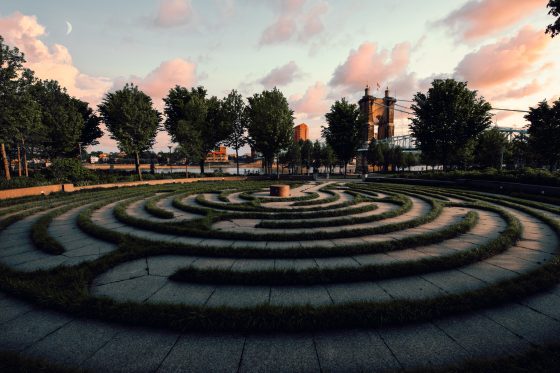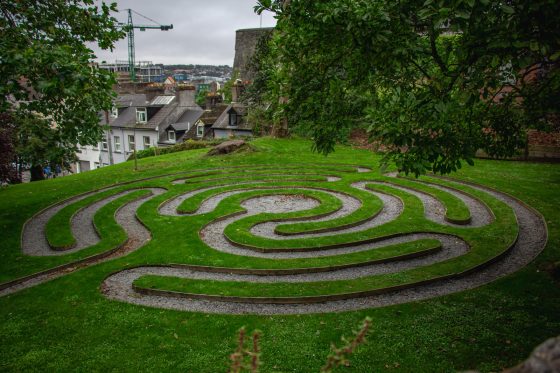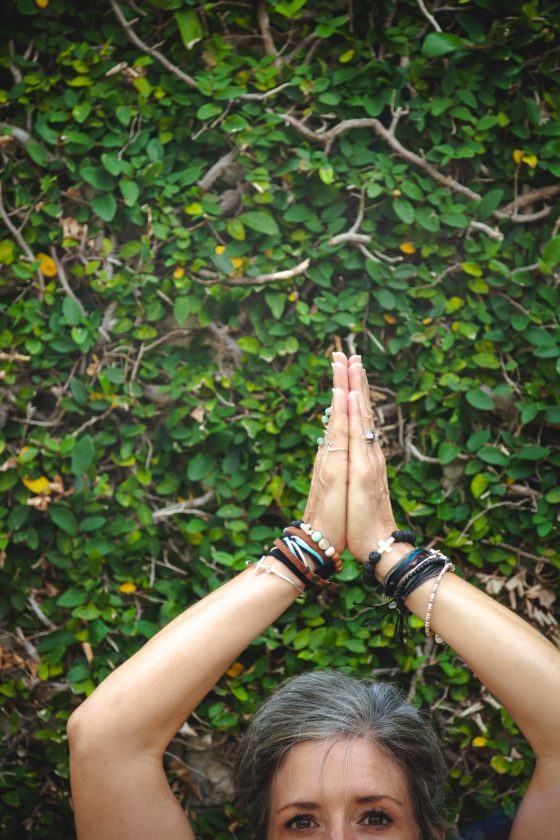Labyrinth pathways, dating back as far as over 4,000 years, have been built by many unrelated cultures around the world and are featured in ancient sites, used by both Eastern and Christian religions, and also embraced by the New Age groups.
Labyrinths for Your Right Brain
Traveling these pathways has helped generations in ways that would surprise those who have yet to experience them. The Labyrinth Society explains that they are “tools for personal, psychological and spiritual transformation, also thought to enhance right-brain activity. Labyrinths evoke metaphor, sacred geometry, spiritual pilgrimage, religious practice, mindfulness, environmental art, and community building.”
Places for Emotional Healing
In the last 10-15 years, an increasing number of people have rediscovered the labyrinth as nurturing place to visit where personal prayer, introspection and emotional healing flows more freely.
Some individuals visit with a specific question to contemplate or to connect with someone they have lost. But there is no doubt that travelling through the pathway of a labyrinth focuses the mind, helping you to slow down your breathing, regaining your inner calm and focus.
Why Hospitals Use Labyrinths
With medical research also proving their therapeutic and even medicinal benefits, many public parks and healthcare organisations over the past decade have integrated them into their buildings and grounds. The United States now has over 170 labyrinths built on hospital grounds to help patients, staff and visitors relax.
Not A Maze – No Stress Allowed
Mostly unicursal, the labyrinth may at first appear like a maze but are in fact quite different. Firstly, you are not meant to get lost, nor at any point fear that you will. They can be round, square or octagonal in shape.
There is a clear entrance point in each labyrinth, from which you walk along a pathway that takes you to the centre. Once at the centre you can stay for as long as you wish, you then turn around, retracing your steps until you reach the entrance, which is also the exit.
Unlike mazes the shape of the labyrinth is usually painted on the ground or created by tiles or stones, flat or close to the ground, so the entire shape is always visible. There are no decisions in a labyrinth walk, it is all laid out clearly for you.
How to Walk A Labyrinth
These are the guidelines the Australian Labyrinth Network provide the following guide on how to walk a labyrinth:
- There are no set rules.
- Walk with an open heart and mind.
- Take a few deep breaths before setting out.
- Walk at a natural pace, find your own rhythm.
- Walk with “soft” eyes.
- Move around people thoughtfully.
- Stay in the centre as long as you like.
- Experience the experience.
- Wait respectfully for all to complete their walk before speaking.
Let Go and Let In
1. LET GO (walking in)
2. LET IN (usually at the centre)
3. INTEGRATE (walking out, reconnecting)
In September 2014, Sydney’s first public stone labyrinth was opened in Centennial Park and is described as “possibly the most intricately built labyrinth in the world.” It follows the design and exact measurements of Chartres Cathedral, and its labyrinth, which was built in the early 13th century on the principles of sacred geometry. Read more about the Centennial Park Labryinth here.
The Sydney Labyrinth Soundtrack
An English-born Australian composer, Corrina Bonshek, created a soundtrack, inspired by birdsong, named Journey to the Centre to be listened to while walking the Centennial Park Labyrinth. She says of the track “I hope this music connects you to your heart and helps gives you space to ‘be’. Its gentle pacing is suited to walking a labyrinth and listening to it with headphones will help you turn inwards and return to outwards refreshed.”
You could also play the Journey to the Centre while visiting another labyrinth site, or when using your finger labyrinth (see below) at home. Download Journey to the Centre here.
Labyrinths in America
Fact: There are now 4400 labyrinth locations in the United States alone! One of the more famous is The 9/11 Labyrinth at The Battery, New York.
Global Labyrinth Locator
To find a labyrinth near you Veriditas & The Labyrinth Society joined together to create the Worldwide Labyrinth Locator.
Finger Labyrinths at Home
Fingers work too – there is also power in a finger labyrinth walks. Here Lars Howlett of Discover Labyrinths explains how he uses a finger labyrinth for meditation, prayer and stress reduction: How I Use a Finger Labyrinth for Meditation, Prayer and Stress Reduction
A finger labyrinth worksheet can be found on the Veriditas website here, simply print out to use at home, draw your own or even trace along the screen of your iPad or tablet. Or alternatively you can make/draw your own labyrinth at home:
How to Draw a 5 Circuit Chartres style Medieval Labyrinth
Quick and Easy Labyrinth! in 3 Minutes!!
https://www.youtube.com/watch?v=H5–pGSEbPY
About the Author
Alicia Fulton is a lifestyle writer currently based in Sydney with more than twenty years’ experience working with titles and firms in New York and Sydney, including ELLE US and Australia, The Knot Magazine, John Brown Publishing, Bloomingdales, Williams Sonoma, Westfield and Moët Hennessy. Alicia devotes her life to her two beautiful sons and family, with whom she has travelled extensively on adventures throughout Europe, Asia and the US.
Republished With Permission: https://www.jessicaadams.com/2020/05/02/blog/astrology-and-labyrinths






